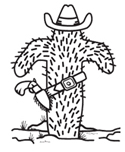
What is the History of Bingo? Bingo is a direct descendant of the Italian National Lottery originally started in the 1530’s.
Following the history of bingo is extremely interesting. Lotto evolved during the 1700’s in France, Germany, and England to what could be described as 90 number bingo, which is still common through out Europe today. The Lotto card was 3 horizontal rows of nine squares. The 1st square or vertical row contained the numbers from 1-10, the second square contained 11-20 and so on up to 81-90 in the last square. Wooden chips or tokens with the numbers 1-90 were drawn from a cloth bag and read aloud.
Players would cover their numbers and the first player to cover a horizontal row was the winner.
Edwin S. Lowe, a toy company owner and salesman can be credited with introducing bingo in the U.S. Mr. Lowe came across a carnival just outside Jacksonville, Georgia while traveling in December of 1929. He stopped at one of the carnival booths with a large crowd of people around it. Lowe watched as a form of Lotto, called Beano, was being played. Participants covered cards with numbers using beans. The pitchman or caller would call numbers until a participant achieved a straight line and shouted “Beano!”
Lowe returned to his home and toy company in New York and began to manufacture and market his new game, which he called “Bingo.” It was a huge success and money maker for those that operated the game. The profit potential caught the interest of a catholic priest in Wilkes-Barre, Pennsylvania. Problems quickly developed when trying to play with a large group since there were only 24 different bingo cards available. This resulted in several winners on each and every game. Lowe contacted Carl Leffler, a professor of mathematics at Columbia University, to design 6000 new bingo cards that were different from each other, ie., had different numbers on each card. This turned out to be a monumental and increasingly difficult task that is said to have cost the professor his sanity.
By 1934, Ed Lowe’s toy company had grown to a thousand employees with over 60 presses operating 24/7 trying to keep up with the demand for his bingo game and new set of 6000 bingo cards. He estimated that there were approximately 10,000 games of bingo being played each week.
Bingo’s evolution was just beginning. Marking cards with beans was clumsy and cumbersome so chips made of cork were introduced. Cards were being printed on thicker, post card type paper and began to be referred to as Marker Cards, Hard Cards, and Boston Cards.
Shutter Cards were introduced in the 1960’s as a way to eliminate placing beans or chips on marker cards. The bingo card was sewn between two layers of a durable coated fiber board. Each square on the card (number) had a colored transparent plastic window (shutter) that could slide over the number when called. Although these cards could last for several years, they were large (7”X 8”) and required a lot of table space when playing several cards. This limited the amount of cards that a participant could play in terms of space and the time it took to slide each window. This in turn restricted the player’s desire to play more cards and consequently resulted in the advent of disposable, newsprint paper cards. Paper cards are relatively small at approximately 4”X 4” and are printed with up to 36 cards on a sheet. Marking these cards with an ink marker is fast and efficient. This has dramatically increased the speed of play and the number of cards purchased and played by participants.
In 1988, a Las Vegas company called Fortunet, introduced a customized personal computer terminal designed to play bingo. This device was originally intended as an aid for the handicapped. It was quickly realized that profits could be significantly increased since the computer would allow the simultaneous play of hundreds of cards for each game and consequently the purchase of hundreds of cards by the player. The computer was able to mark each card and notify the player when they had a winning card. The electronic age for bingo had arrived!
Today there are many electronic bingo companies and the personal computer is rapidly being replaced by small, portable, handheld units. These newer handheld units are now available with color screens and are more powerful than the original computer terminals.